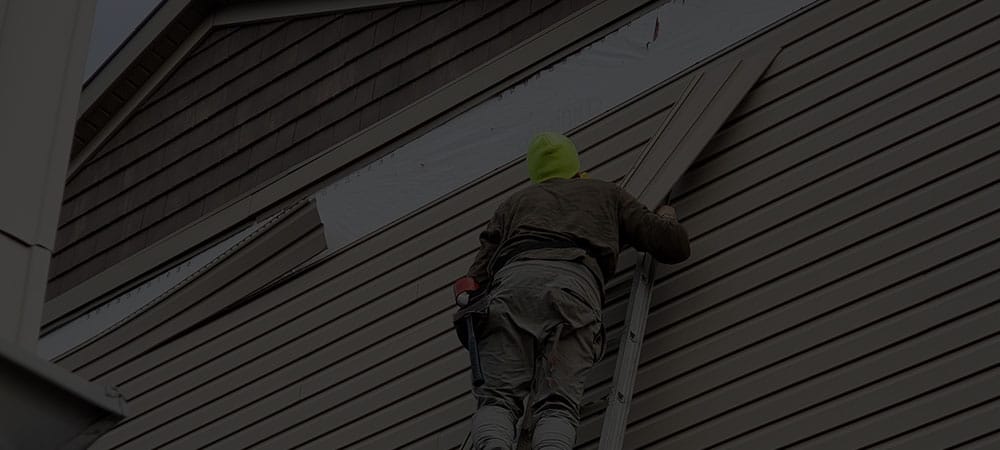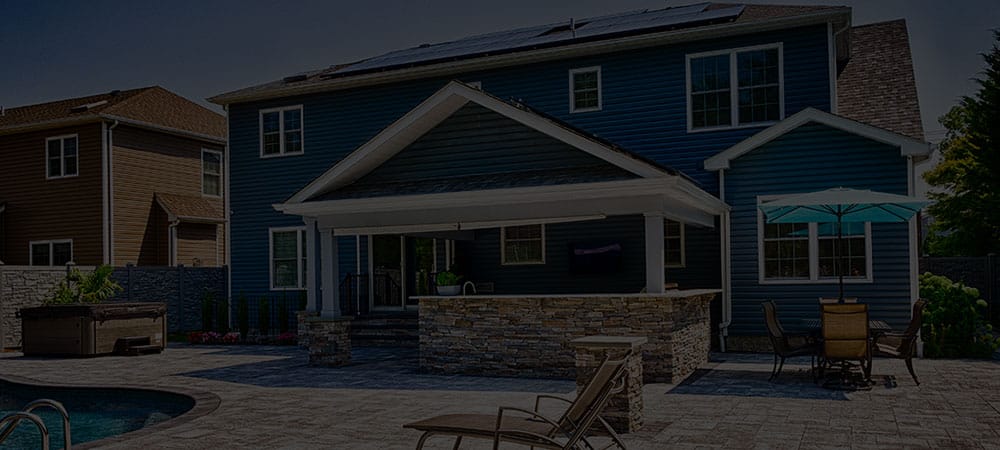Vinyl siding is the most popular exterior siding material in the US. It’s also considered easy to install, but if you don’t want any trouble, hire siding contractors. If you’re installing vinyl siding yourself, you should know about these common vinyl siding mistakes so you can do your best to avoid them.
Driving Nails Too Tightly
DIYers or those who have less experience with vinyl siding drive nails too tightly to ensure that the siding stays in its place firmly. However, this causes problems because panels move a bit when the temperature changes.
If the nails are driven tightly, the panels don’t have any space to expand in warm temperatures. This will lead to bulges and cracks. It will also cause rotted or wet wood beneath the siding.
So, leave 1/32 of an inch of space when driving nails in so the panels can move back and forth without causing any trouble.
Driving Nails Too Loosely
We just explained how important it is to leave a tiny space between the siding and the nail to accommodate the expansion and contraction of the siding. Many people who follow this advice usually don’t nail the siding tightly enough and leave it too loose. The siding sags on hotter days allowing moisture to get underneath the panels.
So, make sure that the clearance between the nail head and the siding is 1/32 of an inch. No more, no less.
Using The Wrong-Sized Nails
For vinyl siding, you need two-inch galvanized roofing nails if there is nothing in between. Don’t use anything smaller than one-inch nails. If you have anything between the base and the panels like foam, then you should use longer nails. Consider using nails that are more than two and a half inches long.
Using Shorter Panels
Shorter panels may appear to be easier to work with for homeowners so they may choose those for siding the exterior. But this results in an unpolished look because shorter panels mean more ugly seams.
Therefore, use longer panels for most parts of the exterior where you can use longer panels. This will allow you to finish the siding project with fewer seams and a better appearance. Moreover, longer panels mean fewer overlaps and fewer opportunities for water and moisture to seep into the panels.
Excessive Overlaps
Overlaps are bound to occur when you install vinyl siding. They can help you hide the seams if you install them correctly. The length of overlap should be one inch plus 3/8 inches for managing the expansion and contraction of the panels.
If the length of the overlaps is larger than this, the expansion of the panels will be restricted and the vinyl siding may appear warped. The same goes for too many overlaps due to the use of shorter panels.
So, make sure you use longer panels and when two panels are overlapped, they should be not more than one inch (plus 3/8 inches).
Not Taking Care Of The Seams
You should install panels in a way that the seams are hidden for the most part. Use the tricks mentioned above like using larger panels, driving nails in not too loosely or tightly, and overlapping the panels correctly. Moreover, make sure that seams overlap away from the line of sight. This will hide the vinyl siding seams and make them invisible to the eye.
When siding the sides of the house, begin the installation from the back corner. This will ensure that the seams are not visible from the stress. And when you’re beginning to do the front and back of the house, you should consider overlapping the seams in a way that they can’t be noticeable from the front door or the yard.
Some people make the big mistake of lining up the seams. It makes a long visible line on the entire siding. You must offset rows to avoid the lining up of the seams.
Trapping Water Behind Corners
When installing corner posts for your vinyl siding, you should be careful enough to make sure that water doesn’t accumulate anywhere to avoid water seepage into the house.
A common mistake is to install a corner post tightly into the shingles. This stops the water pathway created by the J-channel near the end of the corner post. When water doesn’t have anywhere to flow down, it will seep into the house.
To prevent this problem, make sure that the corner post is installed with a little space underneath it so the water pathway from the J-channel is not blocked.
Not Using Foam-Backed Siding
Did you know that installing vinyl siding on your home can be the perfect opportunity for you to save on your energy costs? It’s a common mistake among homeowners that they consider vinyl siding as an exterior improvement only when it can be turned into a way to insulate your house and reduce your utility bills. This is why foam-backed vinyl siding is considered better than non-insulated vinyl siding. As insulated vinyl siding will keep the heat inside in winter and outside in summer, the heating and cooling costs will be lowered.
Moreover, insulated vinyl siding is better at protecting the siding from impact damage because of the foam between the walls and the siding. The impact may be absorbed by the foam leading to no or less damage. In the case of non-insulated vinyl siding, there is a hollow space between the walls and the siding. An impact from something can cause a warp on the siding.
Flashing Incorrectly
Flashing is essential to keep water out of the roof, siding, and the house. Some flashing mistakes can lead to moisture damage.
Using flashing is common, but if you put the vinyl siding on the flashing, it will block the moisture and stop it from escaping. Leave a gap between the siding and the flashing to allow enough room for water to escape.
If someone is caulking the gap between the siding and flashing left for the water to escape, it will create the same problem of water blockage and moisture damage we discussed above. So, leave a 3/8 inches space between the flashing and the siding, and then don’t caulk it.
If flashing is bent towards the wall, it will lead moisture to affect the walls and the house. So, ensure that the flashing’s slope is away from the wall.
Windows are common parts of a house where there is a risk of a leak. So, use a small felt paper to cover the bottom of the windows before installing the J-channels. Make sure that the felt paper flashing overlaps the nearest siding below the window for better water management. This way, water will flow to the J-channels and safely exit the property.
Keep in mind that you will need to install J-channel around all four sides of your windows and doors. The fitting process of J-channels is also similar to the main siding. Keep a 3/8-inch space between the siding and the nail head.
Conclusion
Vinyl siding is inexpensive, has various colors and designs, and doesn’t require maintenance. The installation is easy but you should do some research to avoid common problems and mistakes mentioned above. If you want flawless vinyl siding installation, you should let siding companies Port Jefferson install it for you.



